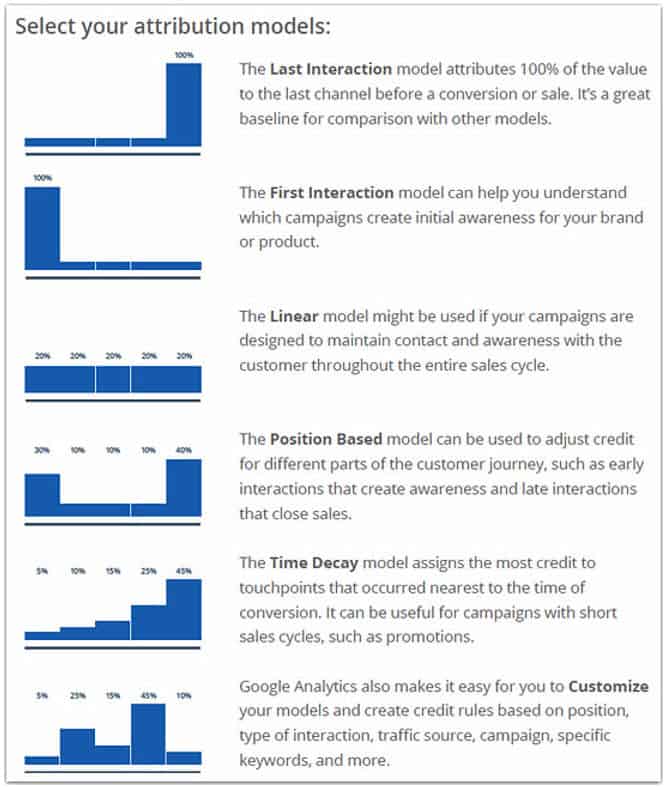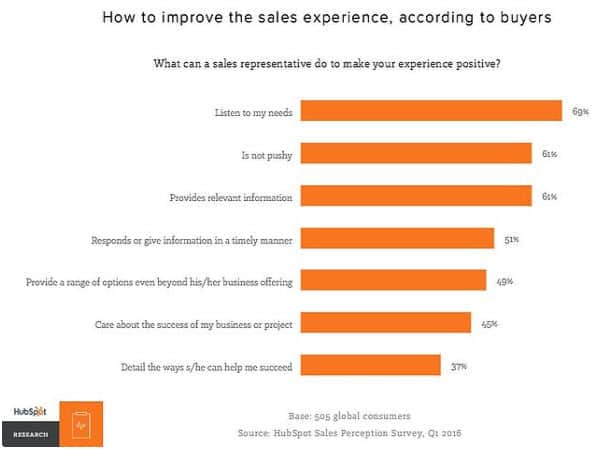Content Framework
Get a map to align content creation to the perfect audience
Build Trust With Engaging Content That Speaks to Your Target
At Terzetto Digital, we know when buyers trust they buy more. You’ll Get Focus on confidence as we map your content strategy to your audience’s needs, included in each integrated digital marketing plan.
Just another way that we are committed to working with you to achieve success and to help you Harmonize Your Digital Marketing℠.
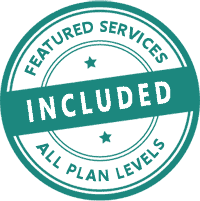
What is a Content Framework?
Wouldn’t it be great if all your prospects were ready to buy your solution immediately? While that does happen, it’s more natural that your prospects will be at different places relative to their willingness to purchase today. This is referred to as the “Buyer’s Journey”, a way to describe the path your target market will take from the awareness that they have a problem, to the consideration of how to solve that problem, and lastly to the decision of where to purchase the solution. With a content framework, your content marketing strategy will include content writing services that map content with each of these stages. This process is also referred to as “Customer Journey Maps”, but no matter what you call it, the following three areas will be mapped:
Awareness Stage:
Sometimes you know exactly the solution you need, and in that case, where you purchase it may come down to the price, location, or online reputation of the vendor. Other times, you may not be so sure because the solution is not obvious if you can’t even define the problem. This is called the “Awareness Stage”, where the buyer first needs to learn exactly what the problem is before they can search for the solution. Let’s illustrate how this might happen with a fictional target market persona we’ll call Jessica, a 35-year-old female homeowner living in Pleasanton, California:

“One day, Jessica started hearing a knocking sound in her house. She followed the sound to a specific corner of the house but had no idea what was making the noise. After going outside, she discovered that the noise was coming from a closet where the residential water heater was located. Her first thought was a rodent and that maybe she should Google a pest control company? No, she decided to investigate further and opened the door. To her relief, nothing jumped out, but the knocking persisted. Was the water heater bad and should she start looking at local services ads to find a plumber? She went into the house and turned on the hot water and it got hot fast, so maybe that’s not the problem. She just had no idea what to do next.”
Perhaps you’ve had a similar experience as Jessica. This is where your small business can really gain market share, by educating potential buyer’s about how your product or service can solve specific issues. With descriptive examples of features, benefits, and customer stories or case studies, you can get them to that “Awareness”, helping them move past this stage with content creation such as:
- Blogging to get found on Google
- Social Media Content to cast a wide net
- Video Marketing, such as with explainer videos
- e-Books / Case Studies to show examples
Consideration Stage:
Once a problem has been clearly identified, the next step is how to solve it. This can range from an easy fix to a more complex, multi-vendor approach depending on the issue. Now the buyer has moved into the “Consideration Stage”, a step closer to making a purchase, but not just yet because they want to understand all the ways they could resolve the problem. Let’s visit with Jessica again to see this evolution:

“Having Googled ‘water heater knocking’, Jessica is now aware that the sound is caused by mineral deposits. But does that mean she needs a new water heater or that her water quality is bad? She discovers a do-it-yourself blog article from a home inspector that explains the 10 steps she needs to perform to flush the water heater, which will eliminate the noise. While somewhat handy around the house, Jessica decides not to go the DIY route as the article also mentions this problem may reoccur due to “hard water”. This is now more complex, and she will need to consider installing water softening equipment if she wants a more permanent solution.”
The buyer’s journey that Jessica is on demonstrates how great content marketing can help you get found as the best solution for a problem. You’ll want to continue building up your digital marketing educational content with these additional content creation ideas:
- Email Marketing to stay top of mind
- How-To-Guide to show your authority
- Buying / Product Guides to provide clarity
- Customer Testimonial / Social Proof / Reviews to provide confidence
Decision Stage:
Having the prospect click on the “Buy Now” button is closer than ever. After considering the options to solve the problem at hand, now the final hurdle is simply where to make the purchase. This is called the “Decision Stage”, where the buyer is now highly educated on all aspects of the problem and can now buy or hire the solution. Let’s drop in on Jessica again to see how her story ends:

“Now that Jessica knows she doesn’t need a new water heater, she decides to hire a plumber to flush the water heater and install a water softener. After doing a local search, she finds a company willing to come out at no cost to test the water quality. Jessica hires this plumber as they arrived on time, had great reviews, and we’re offering a special discount for first-time customers.”
The lesson of Jessica’s journey from awareness to her final purchase illustrates just how important content promotion can be to your local marketing or eCommerce marketing. For a successful content strategy, make sure you include the following:
- Free Consultation / Live Demo
- Product or Service-related Content
- Special Offers / Coupons
- Email Marketing after the sale
Where Would a Content Framework be Used?
While your content strategy should drive the decision as to where to implement a content framework, in general, it can be applied to all areas of your digital marketing. The reasons for this are clear if you consider that buyers are often confused, therefore your content can provide the clarity that perhaps your competitor’s content cannot, winning the sale for you.
Answer Questions – One of the most valuable pieces of website content that you can write is a “Frequently Asked Questions (FAQ)” page or section on your small business website. While these are a great resource for prospects to learn more about your solution, they also offer affordable SEO benefits:
- The FAQ is considered structured data markup, also known as Schema, that helps search engines like Google provide richer search results directly on the Search Engine Results (SERP’s) page.
- When a local search is performed on Google maps, the result is often the Google Business Profile (formerly Google My Business) page of a local business. This is another great place to answer questions, especially when you consider that anyone can post a question. All you need to do is to monitor your GBP page, then when someone posts a question, you can be the first to provide the best answer for potential customers.

Establish Authority – As the amount of content on the Internet has grown, users have become more skeptical about what they read. Google has addressed this in their Search Quality Rating Guidelines by recognizing that “if the person creating the content has the type and amount of life experience to make him or her an “expert” on the topic, we will value this everyday expertise”. In other words, you as the entrepreneur with years of experience in your field, can get found on Google based on your website content because you are in fact an authority on the subject matter. As a website content writer, you should do the following:
- Blogging – There is no better way to show your authority than with a well written, long-form blog article. This is where you can dissect any topic, getting deep into the details to impress the reader with your expertise and real-life customer stories. Adding in pictures of your services or product photography with links to your eCommerce website will further solidify your knowledge and willingness to help buyers make better decisions.
- Content Curation – As an expert in your industry, you probably follow other industry professional’s social media presence, or subscribe to their email marketing newsletter to educate yourself on important changes within the industry. Just like an art gallery “curates” the best paintings, sharing this social media content or email content with your target market allows them to stay informed by providing content they could never find on their own.

Overcome Sales Objections – Many times a potential buyer will sabotage themselves with doubts about spending the money, keeping them from moving forward with the purchase. While you never want to force a purchase as perhaps that person really can’t afford what you are selling, you can certainly address budget and other objections upfront so they can be better mentally prepared to say “Yes”!
- Cost Analysis – If what you sell or the service you offer is at a low-enough price point, you can skip this concept. But if you’re selling something that requires a substantial investment in time or money, you’ll want to find creative ways to cover this in your advertising strategy. Perhaps you can offer financing yourself or through a third-party, or even prepare a cost analysis of how much more your solution will cost if they wait. This can be a great place to add online calculators, case studies, or even e-Books on the cost savings benefits of your product or service.
- Time Savings – Most people would agree that “time is money”, so if your solution requires that the potential consumer spend time implementing it, you may need to highlight how easy it will be. You could illustrate this in the form of online documentation, and with the help of graphic design services, you can make the tasks look simple with amazing graphics. This is also a great place to upsell other services, such as on-site installation or even an upgraded model that comes with more features.

When Would a Content Framework be Used?
Ultimately, you’ll want to use a content framework through the entire customer lifecycle, from that initial awareness stage to after the purchase, and unfortunately, when they say goodbye. While the entire lifecycle of a customer is a close relative of the buyer’s journey, the difference is that there are many more stages when you look at the span of a customer’s interaction with your small business over time. Where the buyer’s journey is concentrated on closing the initial sale, customer lifecycle marketing focuses on all the paths a customer may take while they are a customer. This increases the need for a content framework due to the shear amount of content creation that is necessary:
- Multiple Purchases
- Customer Service Interaction
- Technical Support Interaction
- Online Reviews
- Returns / Refunds
- Special Offers / Coupons
- New Product or Service Alerts
- Subscription Cancellation
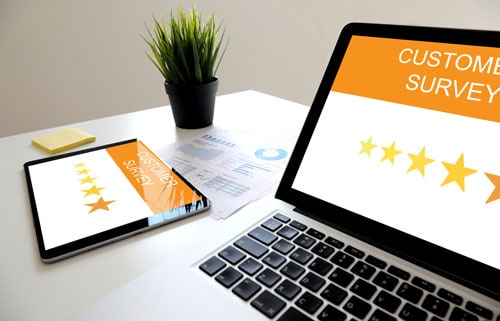
Thinking about customer loyalty and retention requires forethought into what you want your relationship to be with that customer. Perhaps your interaction is minimal, a one-time purchase, or it could be very long, as in over a person’s lifetime. Whatever the time span, it’s important to always align your message with the customers needs at that precise moment. When someone always tries to be right, it’s said that they have an ego or insecurities. However, with a content framework, it’s all about being right all the time:
-
- Right Message – When you say the right thing, it’ll be like music to your customer’s ears. If you’re in tune with a buyer’s needs, they will resonate with what you are saying, eliminating the barriers to purchase.
- Right Time – Have you ever had that awkward moment when you said the right thing but at the wrong time? Think of how negative that felt and why it’s so important to understand not only what to say, but also when to say it.
- Right Audience – Imagine if you spoke in a different language to your customer, one that they didn’t understand. That’s what happens when your target market research is wrong. Spend the time to identify your best audience and they will get your lingo.
- Right Channel – If a tree falls in a forest and no one is around to hear it, does it make a sound? Make sure you’re in the right “digital marketing” forest when talking to your buyer’s so that they will hear you loud and clear.

Who is a Content Framework For?
All small businesses can benefit from mapping content to the appropriate stage of a prospect’s journey to becoming a customer. With so many digital media marketing channels for prospects to navigate, the path to purchase is no longer a straight line, rather it can curve, swerve, jump, or stop. If you don’t have clear website content, social media content, or email content with concise calls to action, you may never get the sale.
Marketing Attribution, also known as Multi-Channel Attribution, is akin to the “How Did You Hear About Us” question that some salespeople like to ask. It is a key metric in any digital marketing strategy, where marketing analytics are used to track all the prospect’s touchpoints on the way to a purchase. By modeling the data in a specific way, you can better understand which digital marketing tactic influenced the prospect to become a customer. Whether it was it a blog post, a website landing page, your social media campaign, local advertising, or marketing videos, knowing which one triggered the most purchases can focus your efforts on the most effective ones. Having a content framework in place will guide you in this complex analysis, allowing you to increase revenue with conversion optimization.
Here are the most common attribution models:
- First Click Attribution Model
- Last Click Attribution Model
- Linear Attribution Model
- Position-Based Attribution Model (U-shaped Attribution Model)
- W-Shaped Attribution Model
- Time Decay Attribution Model
- Last Google Ads Click Attribution Model
- Lead Conversion Touch Attribution Model
- Full-Path (Z-Shaped) Attribution Model
- Custom, Algorithmic, or Data-Driven Attribution Model
How Much Does a Content Framework Cost?
Less than you think, but more if you decide not to use a content framework. It’s difficult to put a price on lost sales opportunities unless you have an analytics dashboard that tracks all your digital analytics. If not, then you would have no clue since you’d have nothing to tell you that those opportunities existed in the first place. So let’s look at some statistics to shed some light on this topic:
-
- According to the Demand Gen Report, “87% of the buyers surveyed said that the solution provider they chose provided ample content to help them through each stage of the decision-making process”.
-
- When making a purchasing decision, 70% of buyers are trying to solve a specific problem.
-
- During the awareness stage, buyers rely on search, vendor websites, and newsletters/emails as their top channels to find information.
-
- Research from Hubspot confirms that “Buyers today really want to avoid pushy sales representatives. They’re looking for someone who will listen to their needs, provide relevant information in a timely manner, and are invested in the success of their business.”
Are You Ready to Get Focus and Build Audience Trust With a Content Framework?
All Digital Marketing Plan Levels Include Content Framework
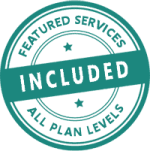
You'll Get Focus With These Featured Services

Buyer’s Journey Content Mapping
| Starter Plan | Growth Plan | Pro Plan |
|---|---|---|
When it comes to content, one size rarely fits all. To ensure that your website and social media content is effective at generating leads and selling your solution, you need to deliver the right content, to the right person, at the right time. Content mapping to your target audience is the process of doing just that.

Email Marketing Segmentation
| Starter Plan | Growth Plan | Pro Plan |
|---|---|---|
Send to thousands of email recipients, but speak to each of them as if only they received an email from you. Here we’ll identify content to separate out your email marketing lists to match your target market.

Facebook Custom Audiences
| Starter Plan | Growth Plan | Pro Plan |
|---|---|---|
By installing a tracking pixel on your website, we can identify visitors that have a Facebook profile, allowing you to target Facebook ads to them. This powerful feature can also expand your target market by creating “look-alike” audiences that have similar characteristics.

Content Promotion Plan
| Starter Plan | Growth Plan | Pro Plan |
|---|---|---|
Promotion keeps the brand moving forward through a consistent, repeatable action plan. Here, the brand comes to life through various digital platforms with engaging content that builds trust with your audience.



